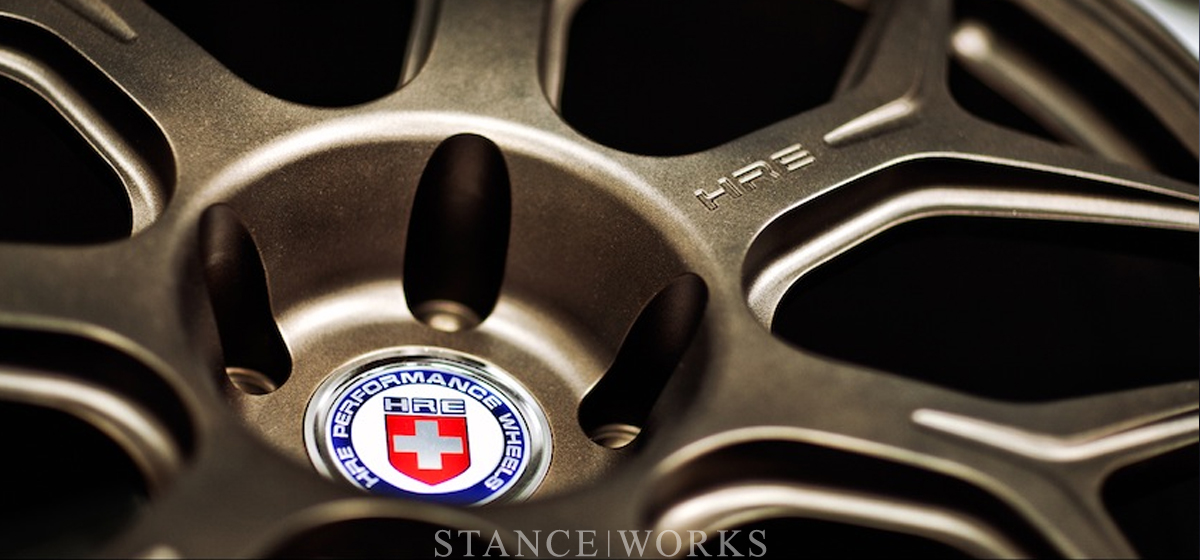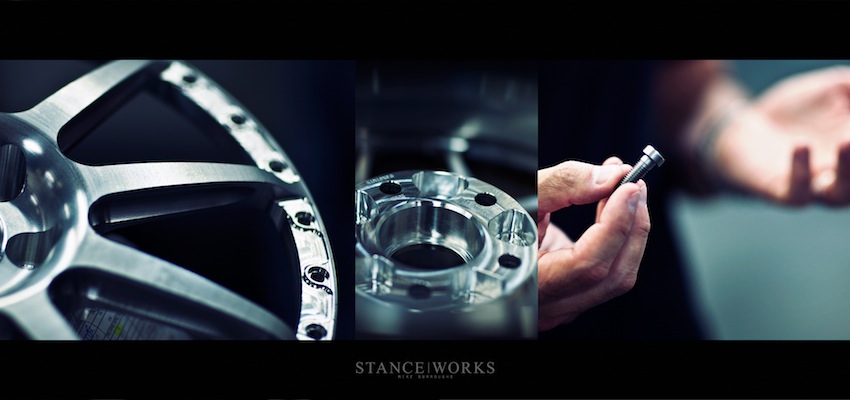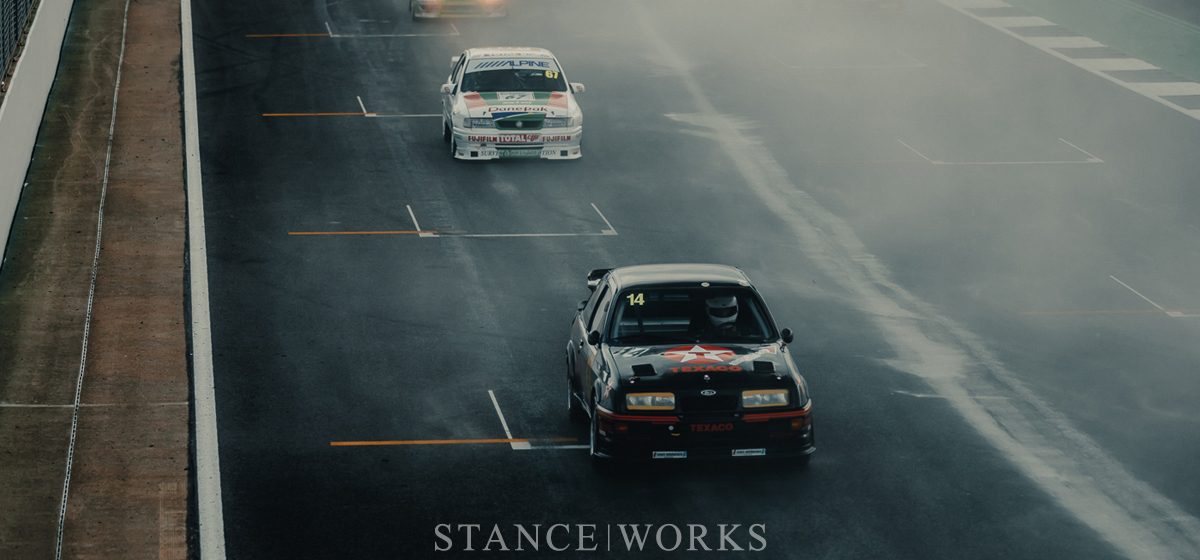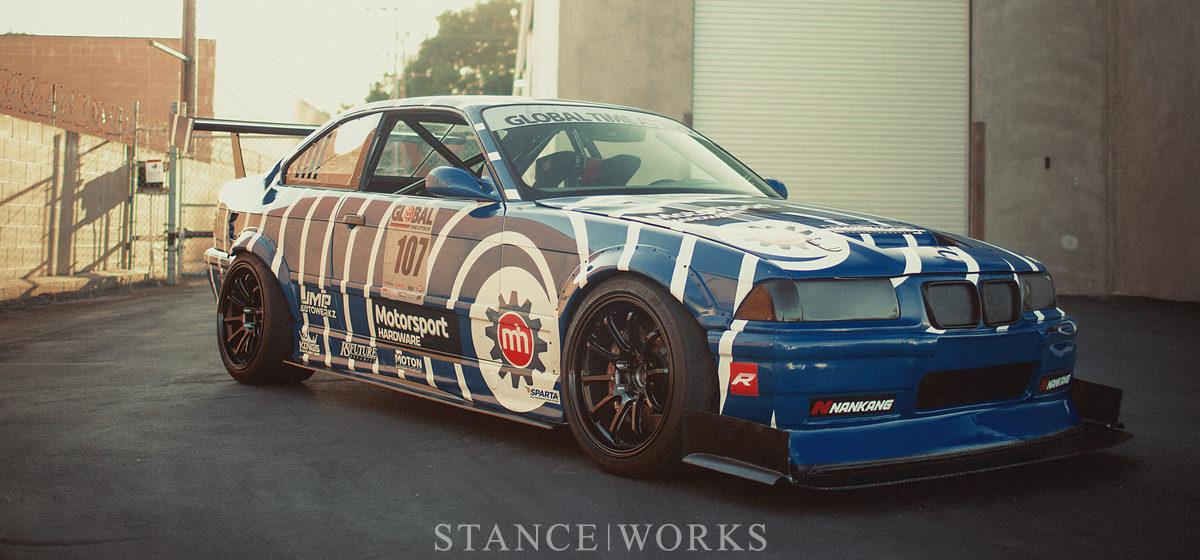Let’s face it: StanceWorks is inarguably made up of wheel snobs enthusiasts, and when we got the opportunity to tour the HRE facility and get an inside look at how their forged wheels are manufactured, we were more than excited. Wheels and the wheel industry mean a lot to us, and the opportunity for us to take an inside look at some of the finest wheels in the world tickled our fancy to say the least.
The history of aftermarket performance wheels is something near and dear to us. We’re fans of the real deal and the names who bring us “the good stuff,” and we push to celebrate the guys who are still in the wheel business for the right reasons. HRE isn’t afraid to stay true to offering more than just a pretty piece of metal. They’ve got heritage, prestige, and most importantly, true engineering. This is our opportunity to educate the community.
Alan Peltier, the president of HRE, gave us the full walk-through, from conceptualizing a wheel and the design process, to the manufacturing and finishing of the wheel. Alan prides himself and the company on precision engineering, cluing us in to the fact that form follows function when it comes to their business philosophy. HRE is in a constant strive for perfection.
The entire process begins, quite obviously, with design. An HRE wheel begins life as a concept sketch, says HRE’s Creative Director, Patrick Moran. Having designed everything from cars, to airplanes, to consumer electronics and footwear, Patrick took us through the attention to detail the concept design encounters. Once modeled in ProE software, the initial design is fine-tuned by checking proportion, surfacing and of course, strength and weight parameters. After a first article is produced, the team scrutinizes the design even more by checking to see if it lives up to the HRE brand.
“Once we have a prototype, we’ll check the reflections on the wheel to make sure they’re flowing correctly. We also look to make sure the surfaces transition and integrate as we envisioned and if not, we go back and edit the design. This process continues until it’s just right.”
Another step that separates an HRE wheel from the others is a process called Finite Element Analysis. FEA is just one of the testing elements required when designing a wheel and ensuring its structural integrity under load in countless situations. It’s all part of what makes a wheel light, strong, and of course, superior. FEA software costs more than a car, but in the end, it wins races and saves lives at the same time. There’s more that goes into wheel construction than just designing something that looks pretty, and HRE builds a product they’re proud to put their name on. So once a wheel is designed and is aesthetically pleasing, it is tested in as many ways as possible. Countless changes are made in order to make the wheel perform as well as possible while keeping the desired visual appeal in check.
After the design process is complete, the wheel moves to manufacturing. For 3-piece wheels, this means forgings for the centers are cut on a 3-axis mill. What starts out as a solid 80-lb chunk of aluminum quickly turns into an elegant wheel face, which is later assembled with its respective wheel halves.
If it is a monoblock wheel, the spun forging, which slightly resembles the overall shape of a wheel, is put in to the first of two lathes. The first one machines down the outside of the soon-to-be wheel. The “barrel” of the wheel is turned down to mere fractions of an inch, completing the exterior.
From there, the blank goes from the vertical lathes to the horizontal mill where the face is machined. After opening the CNC machine’s door and allowing the steam of coolant to clear and the coolant itself to run off the hot metal, you really see how the design and finish work come together. Hours of machine time go in to each wheel, one by one, all made to order. Each wheel is custom tailored to the client’s needs, from diameter, to width, to PCD, offset, and backpad/brake clearance. Once the forging leaves this machine it is officially a “wheel”, so to speak.
As a final step before finishing, and arguably one of the most important and scrutinizing steps of the process, is quality control. As part of QC, each wheel’s roundness is checked to ensure it meets the standards of the company. It’s steps like this that keep companies like HRE on the upper tier of the wheel manufacturing industry. This isn’t something you’ll find in every facility: this is the real deal.
Each wheel is finished in-house, starting with a chemical bath, one by one, to ensure it is flawless before powdercoating. The chemical dip cleans them, but only after being cleaned by hand one final time with mineral spirits do the wheels head off to finishing. Every stage of wheel production is done by hand, and the part that customers notice most is the luster at the end. One might assume that a company which produces so many wheels must finish them in batches, but that’s where you’d be wrong. Every single wheel that moves through the HRE production line is finished and assembled by hand. One by one, each wheel is cleaned, polished, powdercoated, and assembled. There are a group of guys who take pride in the wheels they build, tightening each bolt and fastener on each wheel with the understanding that these wheels are more than just some “aftermarket modification”.
At the end, what you have is a truly gorgeous wheel that has been engineered to perfection.
But there’s more than meets the eye. So much more. The heavyweight (I suppose featherweight is more appropriate) in HRE’s corner of the ring is their passion behind creating what they consider to be the perfect wheel. I’ve met a lot of people who are passionate about a lot of things, and when Alan explains to what extent he goes to in the pursuit of perfection, it’s easy to see why he fits right in.
His pride and joy is HRE’s competition series. There’s no doubt that wheels are something he loves, but the challenges he has overcome with shaving fractions of an ounce exemplifies Alan’s true fanaticism. For him, form is function. Tens of dozens of revisions go in to perfecting a wheel, from milling down every spare millimeter of space, to drilling weight-reducing pockets into the back of the wheel, and even cutting into the sides of each spoke, it’s all in the hunt for the ultimate in wheel technology and performance. It’s aerospace engineering brought to the streets… and it’s passion and dedication like this you can’t find just anywhere.
While SW won’t become a wheel company, we can certainly appreciate what goes in to making a quality wheel. We strive to push those that represent their industry in the best way possible, and HRE does just that. We’ve made an obvious stand against replica wheels here on SW, and we hope this shows why. You get what you pay for. And so in short, if we made wheels, this is the way we’d do it. Right here, folks.
There’s more to come from HRE, this is only scratching the surface.














